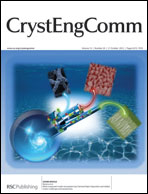Synthesis, characterization and cathodoluminescence of self-assembled 1D ZnO/In2O3 nano-heterostructures
Abstract
One-dimensional(1D) ZnO/In2O3 nano-heterostructures of ZnO belts decorated with In2O3 teeth have been self-assembled on single crystal silicon substrates by thermal


 Please wait while we load your content...
Please wait while we load your content...